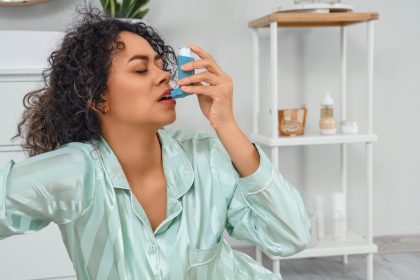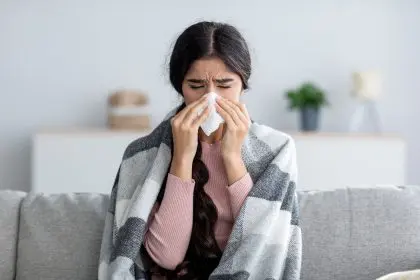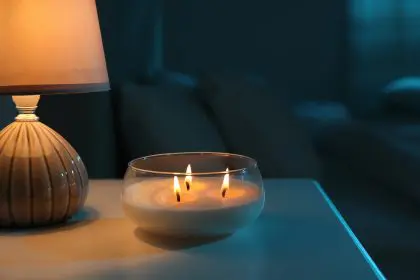Most people consider home their sanctuary — a place for rest, family, and security. Yet beneath the comfort of familiar surroundings, potential health hazards might be compromising wellbeing. From hidden moisture problems to everyday household products, these environmental factors can trigger symptoms often attributed to other causes.
Indoor environmental quality affects respiratory health, sleep patterns, energy levels and even cognitive function. Identifying and addressing these issues represents an important step toward creating a truly health-supportive living space.
The invisible culprits
A visibly clean home doesn’t necessarily mean a healthy one. Several common household conditions can silently impact health without obvious signs.
Mold and moisture issues: Water intrusion provides perfect conditions for mold growth behind walls, under flooring, or in poorly ventilated areas. Exposure can trigger respiratory problems, headaches, skin irritation and persistent fatigue, particularly for those with asthma or allergies.
Basements, bathrooms and kitchens present the highest risk for moisture accumulation. Musty odors, persistent coughing or sinus congestion that improves when away from home often indicate potential mold issues requiring investigation.
Indoor air pollution: While outdoor air quality receives significant attention, indoor air often contains higher concentrations of certain pollutants. Synthetic furnishings, adhesives, air fresheners and decorative candles release volatile organic compounds (VOCs) that can accumulate in enclosed spaces.
Even routine cooking, especially on gas stoves without proper ventilation, introduces respiratory irritants like nitrogen dioxide into living spaces. These exposures can cause immediate symptoms like dizziness or eye irritation and potentially contribute to long-term health effects.
Everyday items of concern
Common household products and materials can introduce surprising health risks through daily exposure:
Conventional cleaning products: Many commercial cleaners contain harsh chemicals including ammonia, chlorine bleach and synthetic fragrances. These substances can irritate lungs, trigger asthma attacks, or cause skin reactions. Accidental mixing of certain products can create dangerous chemical reactions.
Plant-based or fragrance-free alternatives effectively clean while reducing exposure to potentially harmful substances.
Deteriorating cookware: Overheated nonstick pans with damaged Teflon coatings release particulates and fumes linked to flu-like symptoms. This risk increases in smaller kitchens with limited ventilation.
Scratched or peeling nonstick surfaces signal the need for replacement, ideally with alternatives like stainless steel, cast iron or ceramic-coated options.
Aging soft furnishings: Older carpets and upholstery accumulate allergens, dust mites and pet dander beyond what surface cleaning can remove. Materials manufactured before 2005 may contain flame retardants associated with hormone disruption and other health concerns.
- Regular professional cleaning helps reduce particle accumulation
- HEPA-filter vacuums capture smaller particles conventional vacuums miss
- Replacing older materials with certified low-emission alternatives reduces exposure
Structural and design factors
The physical characteristics of living spaces significantly influence occupant health:
Lighting quality: Exposure to bright artificial light, particularly blue-wavelength light from LED fixtures and electronic screens, can disrupt natural sleep-wake cycles. Poor sleep patterns increase risk factors for multiple health conditions including depression, cardiovascular problems and metabolic disorders.
Installing dimmer switches, using warm-toned lighting in evening hours, and limiting screen exposure before bedtime helps maintain healthier circadian rhythms.
Sound environment: Background noise from traffic, appliances or neighboring units creates ongoing stress that many residents eventually stop consciously noticing. This constant stimulation elevates stress hormones, affects concentration, and impairs sleep quality.
Simple sound-dampening strategies include weatherstripping, fabric wall hangings, area rugs, and white noise machines to create more restorative spaces.
Ventilation systems: Inadequate air exchange allows pollutant buildup and moisture accumulation. Signs of poor ventilation include condensation on windows, stuffy atmospheres, and persistent odors.
Daily window opening when weather permits, proper maintenance of ventilation equipment, and strategic air purifier placement significantly improve indoor air quality.
Vulnerable populations
While environmental factors affect everyone, certain groups face heightened risks:
Children: With developing immune systems and higher breathing rates relative to body size, children absorb proportionally more airborne substances than adults. This increases vulnerability to respiratory irritants, chemical exposures, and allergens.
Older adults: Age-related changes in respiratory function, immune response, and detoxification capacity make seniors more susceptible to environmental triggers. Conditions that younger adults might easily tolerate can significantly impact elderly individuals.
A thorough assessment of living spaces occupied by vulnerable individuals often reveals simple modifications that can substantially improve health outcomes.
Creating healthier living spaces
Improving home environments doesn’t require major renovations or expense. Strategic changes can significantly reduce exposure to common hazards:
- Replace chemical air fresheners with natural alternatives like essential oils or simmered citrus peels
- Introduce air-purifying houseplants such as snake plants and spider plants (with consideration for pet safety)
- Use vacuum cleaners with HEPA filtration to capture microscopic particles
- Address water leaks promptly to prevent mold development
- Choose natural fiber bedding and upholstery when possible
- Maintain appliance ventilation systems and use them consistently
For serious concerns like suspected mold infestation, lead paint or asbestos, professional assessment provides safer, more effective solutions than DIY approaches.
Living environments significantly influence physical and mental wellbeing. By identifying and addressing common household hazards, residents can transform their homes from potential sources of health problems into true sanctuaries that support healing, recovery and optimal function.














